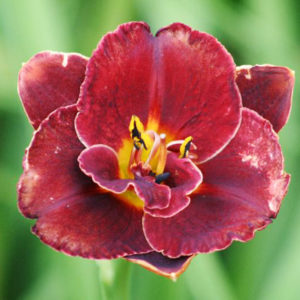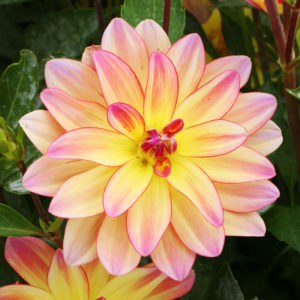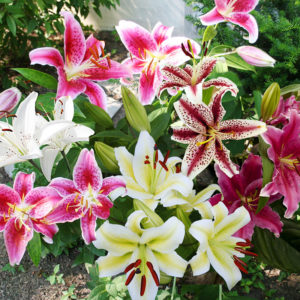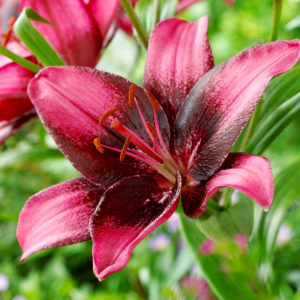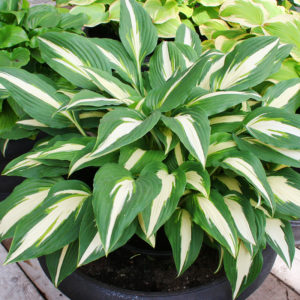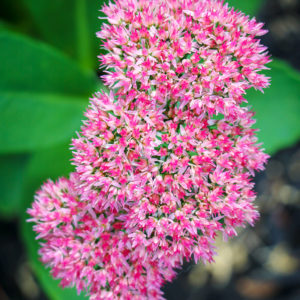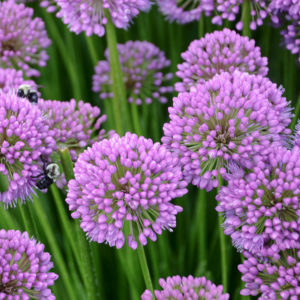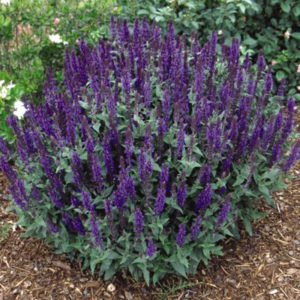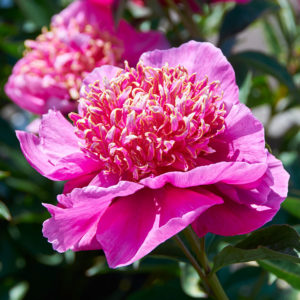You want to have a garden party? But you have no plants in your garden to party with, sad face. That is quite the dilemma you are facing. However, there is a simple solution: plant some perennials and bulbs in your garden.
While this may seem like an easy task for some. Serious gardeners love to add plants to their gardens and are thrilled to add more to it. For beginner gardeners planting bulbs and perennials for the first time may not be so easy. You may not know where to even begin when it comes to choosing plants for your garden. When you determine what perennials and bulbs you like you may not know where the proper place to plant them is. It can all be a bit overwhelming and confusing when you are trying something new. The good news is I am here to help with a list of bulbs and perennials that are beginner-friendly and easy to grow!
How Do I Determine if Something is Easy to Grow?
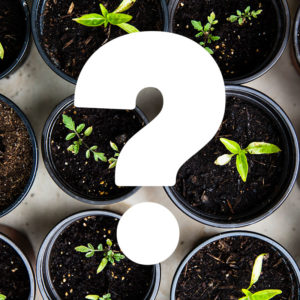
Having served the garden community for nearly 20 years I have learned a few things about what makes a plant easy to grow. To determine which bulbs and perennials I deem easy to grow I have a few factors I have considered to determine if they are easy to grow. These factors include maintenance level, water requirements, ease of establishment, and how finicky the plant’s location is.
Some bulbs and perennials are easy to start and establish but require a hefty amount of maintenance. The maintenance aspect for some people who like to play around in the garden may not be a factor. If you are just getting started in gardening you don’t want to go overboard with the amount of aftercare required. Therefore it is good to start with plants that require little maintenance.
Watering makes all the difference when it comes to the success of growing plants. Plants that are easy to grow generally have low to moderate watering needs. If you forget to water one day in the middle of summer these plants will recover much quicker. They are also not as particular about over or under-watering.
I like to say that flower bulbs are perfect for the neglectful gardener. Many flower bulbs can be planted in the ground and forgotten about until you see sprouts above ground. Often people who are new to gardening with bulbs will overwater the bulbs when they are dormant. This often leads to the bulbs rotting, which causes the bulbs not to grow. Therefore, I have selected bulbs and perennials that sprout fairly quickly and are good at indicating their growing points.
Certain bulbs and perennials require very specific conditions in their planting location to survive and thrive. Often these bulbs and perennials are very unique and desirable; however, they may not be the best for people who are just starting out with their flower garden. The bulbs and perennials on this list are not too picky when it comes to their planting location. They are easy-going and generally happy wherever their roots take hold.
Now that you know how I determined what to add to my suggestions, enjoy this list below.
Easy to Grow Perennials and Bulbs
Daylilies
Daylilies are one of the easiest perennials to grow. They are often planted in low maintenance areas such as commercial buildings and parking lots. Daylilies have a spot in any sunny to part sun garden area. Daylilies when grown from a bare root sprout quickly and can often be seen sprouting in the package upon arrival to your house. After your daylilies are established they have low water needs and are considered drought tolerant. Care to keep the daylilies looking nice is minimal. You may choose to remove the spent flower buds and stems after they finish blooming. This is not necessary for your daylilies to grow and thrive, it is a matter of how neat and tidy you like your garden to be. Daylilies can bloom for a short period of 2 weeks with a new bloom every day. Re-blooming daylilies can bloom for months, forming new flowers every day but with a more continuous bloom cycle. The bloom colors and features you can expect to see from daylilies are nearly endless with two-tone blooms, ruffled petals, double blooms and nearly every color of the rainbow.
Dahlias
Bold blooms are a key feature of dahlias, which is why gardeners love to grow them. Dahlias take many flower forms, sizes, and shapes. Once these tuberous bulbs sprout from the ground they are easy to keep healthy and blooming. With the exception of dinner plate dahlias, they typically do not require extra pruning or maintenance to produce the best blooms. In addition to their ease of care after sprouting getting them to pop from the ground is pretty easy. Here are a few tips to growing dahlias from tubers:Make sure your soil is warm and the danger of frost has passed,
- Prior to sprouting don’t water the tubers
- Consider starting your tubers in containers if you aren’t sure about the soil temperature. You will be able to transplant the dahlias from the containers into the ground once they have sprouted.
Oriental Lilies
Oriental Lilies are recognizable flowers that are often seen in floral arrangements. Stargazer Lily is the most popular Oriental Lily; many who are not flower enthusiasts will recognize Stargazer. These perennial flowers grow from a bulb and are very easy to establish. Like other bulbs, they prefer to be kept on the dry side until they sprout. Once they sprout they are easy to grow and blooms present themselves during the first growing season. Oriental Lilies grow well in most soils as long as the soil drains well. They do best in full sun but also tolerate a part sun location. Producing flowers mid-summer, typically the blooms of Oriental Lilies, are white, shades of pink, or yellow. The blooms are showy and fragrant–they pack a lot of punch for bulbs that are so easy to grow and beginner-friendly.
Asiatic Lilies
Asiatic Lilies may sometimes be confused with Oriental Lilies as they have a similar appearance with colorful showy blooms. However, there are some key differences in appearance. Asiatic Lilies tend to bloom in warm colors like yellow, orange, red, pink and deep purple. While Oriental Lilies are known for their intoxicating fragrance Asiatic Lilies do not have a scent to their blooms. Both of these lilies that grow from bulbs bloom in summer, but Asiatic Lilies lead the show with their early summer blooms. The ease of growing and care requirements for Asiatic Lilies are the same as that of Oriental Lilies. Grow Asiatic Lilies in a sun to part sun location in soil that drains well. Asiatic Lily bulbs are eager to sprout and will return to your garden for several years.
Hosta
Shaded garden areas can seem to make deciding what to plant a little more difficult as there are fewer options. Hosta is one of the most popular garden perennials and there is a good reason for it. These easy to grow shade perennials require minimal care. Establishing hosta from bare root is easy as these perennials are often eager to grow. Hosta aren’t too picky on the soil, extremes like very dry or very wet soil could cause issues with growing, however, most garden soils will be acceptable for growing hosta. With over 500 different varieties of hosta to choose from it is easy to create a lot of color and texture by simply planting different types of hosta in your garden. Miniature hosta like Blue Mouse Ears stay tiny and are best for areas you can easily view them. Large leafed hosta like T-Rex and Big Daddy fill shaded garden spaces and become the spotlight of your shaded garden areas.
Curcuma
Curcuma are a new and exciting tropical bulb native to Southeast Asia. Don’t let their unique looks and tropical feel prevent you from growing these beautiful bulbs. Gardeners growing curcuma in warm climates such as hardiness zones 8 and above will enjoy curcuma as long-lasting perennials in their garden. People in colder climates where the bulbs aren’t winter hardy can still enjoy curucma in pots or grown like an annual. Plant curcuma in full sun and soil that drains well. Since curcuma thrive in tropical climates they do require more water than normal; however, they are still easy to establish and maintain.
Sedum
If you are familiar with succulents which have become popular in the last 5-10 years you may be familiar with sedum. Sedum plants are succulents meaning they don’t require a great deal of moisture to stay healthy. Their leaves retain moisture and are waxy on the outside helping to hold moisture in. Sedum varieties like Autumn Joy Sedum bloom late in summer which is an added bonus. Like the daylilies we mentioned above, it is common to see Sedum growing on commercial properties wear maintenance, and care requirements are low. Sedum requires full sun and soil that does not hold moisture. They are quick to establish and require little aftercare once growing.
Allium
Allium, also known as Ornamental Onions, are often thought of as fall-planted bulbs that bloom in late spring. Perennial growers have come out with more varieties of allium that are easy to grow and behave like traditional summer blooming perennials. These alliums grow from root, not a bulb and bloom later in the summer. Millennium Allium and Blue Eddy Allium are two wonderful varieties of perennial allium. The long bloom time and minimum care requirements make allium a great perennial for beginner gardeners. Perennial alliums aren’t too picky about where they are planted, as long as the soil drains well and they get 6 hours of sun they will thrive. Forming neat clumps with purple flowers these easy to grow perennials have a place in any sunny garden.
Salvia
Early summer brings vivid blooms from salvia plants. These perennial classics can sometimes be referred to as perennial sage. Salvia is easy to establish themselves in the garden when grown from bare root. They have low water requirements. Salvia isn’t too picky about the soil they are planted in as long as it drains well. Initially blooming at the beginning of summer with spikes of blue, purple, white or pink blooms they can bloom again later in the summer. To get your salvia to bloom again in the summer you will want to remove the spent flower buds. Removing the flowers on your salvia plants does require a little work but can be accomplished in a short amount of time with minimal tools. These easy to grow perennials provide loads of color and a neat tidy appearance in the garden.
Peonies
Peonies are a popular garden perennial. These showy and fragrant perennial favorites can live for 75 years or more and require little care to keep them healthy. A popular way to plant peonies is through bare-root planting. They establish easily when planted as a bare-root, and like other bulbs and perennials don’t require excess water when planted. The main concern when planting peonies is that they are planted at the proper depth of 1-2″ below the soil. On average peonies reach heights of 3′ tall with a similar spread. When planting peonies be sure to plant them in an area with adequate space. Peonies can make great focal points in a perennial garden due to their height and attractive flowers and foliage.
Choose the Best Plants for Your Skill Level
When I made this list of plants I had in mind people who had little to no planting experience. These suggestions can also be helpful for someone who has gardening and planting experience but wants to lessen their workload in the garden. Bulbs and perennials are living things which like all other living things do require some care, attention, and work. The bulbs and perennials mentioned above require less care and work for anyone who tries to plant them. Even though these are easy to grow if you try to plant one of the above-mentioned plants and you fail, don’t stop trying! You can only succeed in the garden if you persevere and keep planting!


